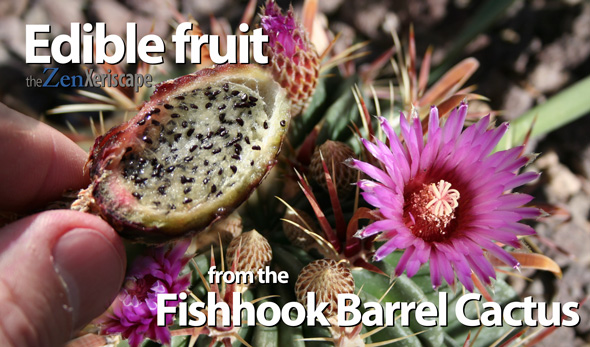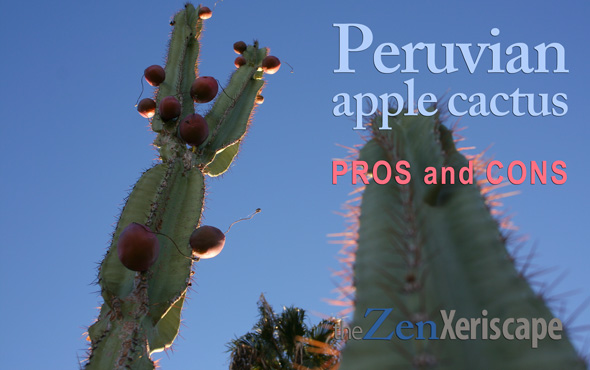I love cactus flowers. Out of all the plants in the world, they produce some of the most uniquely beautiful flowers. Recently, I dissected a large cactus flower to see what was inside. As a result, I think I became an amateur-expert in cactus flower anatomy.
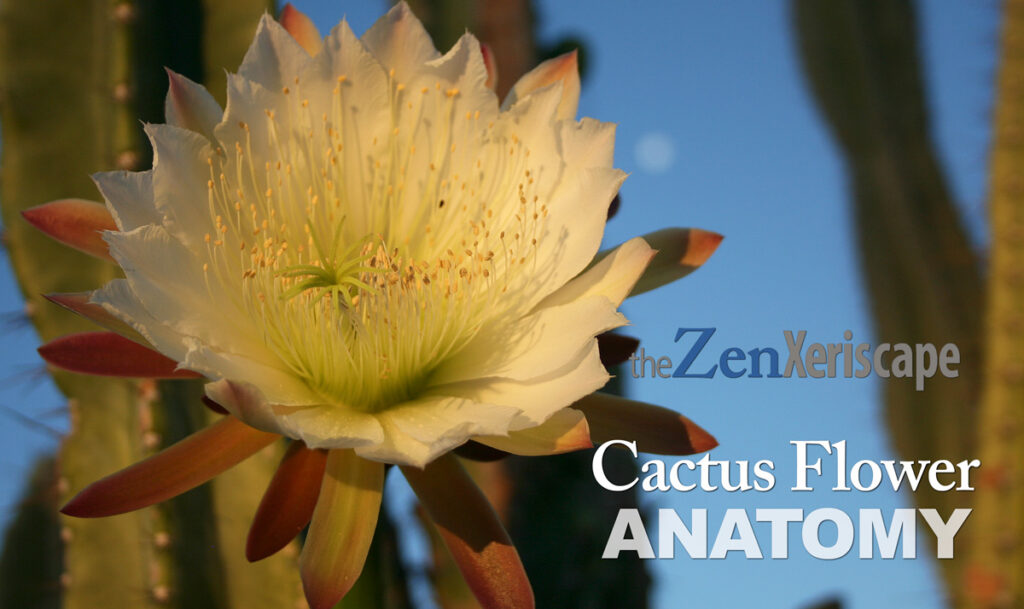
The information I discovered about cactus flower anatomy and its reproductive system seems similar to our own human reproductive system. Therefore, parental guidance is suggested. If you’re like me, you love to figure out how things work. When I was a kid, I’d get in a lot of trouble because I took apart a toaster, a clock, and a radio. Since then, I’ve moved on from dissecting man-made artifacts. Recently, I dissected a large cactus flower, and chronicled how cactus flower anatomy works.
Cactus flower anatomy
Cactus fruit begins with a flower
Before our cactus plant can give us fruit, it needs flowers. From the outside, the cactus flowers looks very beautiful, and often have a unique, enticing scent. Yet, when we peer inside the flower, it is filled with all sorts of mysterious appendages.
The birds and the bees…
Those appendages each have a specific purpose. Together, they work inside the flower to entice pollinators. The end results of all that unseen coordination, enticement, and biology are the healthy cactus fruits that we can all enjoy.
A free 30-day trial of Prime. (As an Amazon Associate, I earn a commission from qualifying purchases.)
Cactus reproductive system
The reproductive system in flowers is a marvelous combination of ingenuity, survival, and evolution. The flower I dissected belongs to the Peruvian apple cactus.
Many cactus varieties are self-pollinating, including the Peruvian apple cactus. Self-pollinating flowers have both male and female parts.
Male parts of the cactus flower:
The male part of the flower is called the stamen. The stamen has two parts:
—anther
—filament
A flower’s anther produces the pollen. In most flowers, the anthers and its supportive filaments surround the female parts. The filament supports the anther, just as a flower stalk supports a flower.
Female parts of the cactus flower:
The female part of the flower is known as the pistil. Just like the stamen (male), the female pistil consists of various parts, each with specific functions. Parts of the pistil include:
—stigma
—style
—ovary

where it then combines with the egg cells or ovules
(white part near my thumb in the photo).
Photo by Doug Martin
Browse frost blankets to protect your outdoor plants! (As an Amazon Associate, I earn a commission from qualifying purchases.)

the male stamens (anthers and filaments), which produce the pollen.
Photo by Doug Martin
Pollination process for cactus flowers
During the pollination process, bees, birds, butterflies, or other pollinators search for nectar. It’s usually at the base of the flower. As they explore, the anther’s pollen sticks to the pollinators’ bodies. Then, as the insect, bird, or other creature continues to gather nectar, the pollen (male) gets transferred to the pistil’s sticky stigma (female).
It’s easy to see that pollination is a diabolically clever idea. Insects, birds, or even the wind can transfer pollen from the stamen (male) to the pistil (female). Many times, pollen can be transferred from plant-to-plant. That’s called cross-pollination. This process only works if the plants are of the same species.
Once pollen gets stuck on the stigma, the style transfers it to the ovary. Just like the ovary on female animals, a flower’s ovary contains egg cells. The egg cells are called ovules. Once fertilized with pollen, these ovules will develop into seeds, along with a protective fruity flesh that surrounds them.
The fruit develops, grows, and ripens inside the pistil’s ovary. During the ripening process, the ovary swells to accommodate the increasing volume as both the flesh of the fruits and the seeds develop.
Once the fruits are ripe, they taste and smell the best. That’s when animals and birds pick the fruit to eat. As they digest their meal, they expel the seeds along with a pack of fertilizer (feces) to start the process of life all over again.
Perianth is for protection
The parts that we think of as the actual flower is known as the perianth. A flower’s perianth consists of:
—petals
—sepals
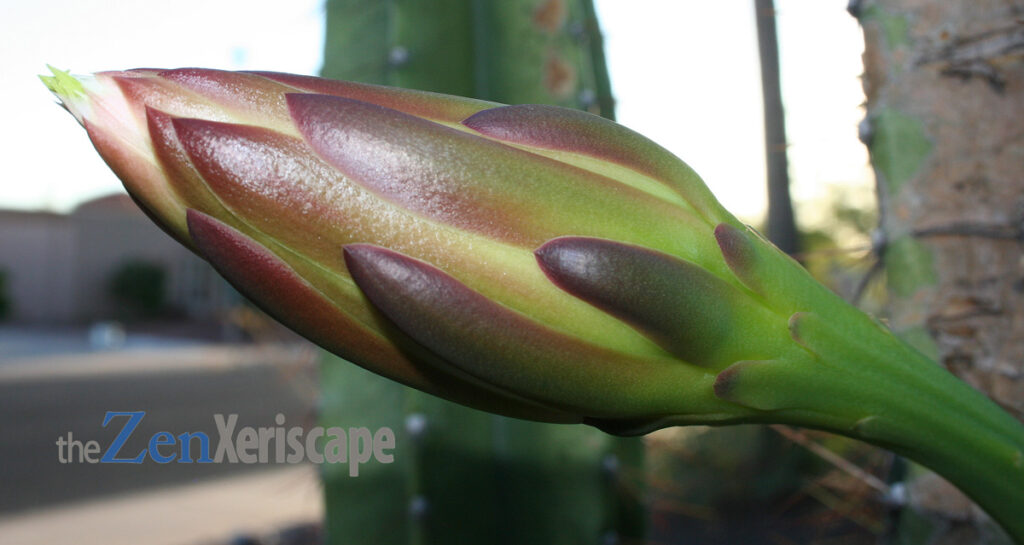
The green sepals on the bottom of the flower
also protect and hold the flower.
Photo by Doug Martin
A cactus flower’s petals surround its reproductive parts just like a protective envelope of beauty, color, and fragrance. When I look at a cactus flower, the first thing I notice is the color, shape, and size of the flower petals. Just like us, pollinators are also attracted by those attributes of the flower’s petals.
To me, the sepals also appear to be developing flower petals. On many flowers, a sepal is similar to a tough green leaf. A flower’s sepals protect the developing flower bud, and can also work in combination with the flower’s petals to attract specific pollinators.

Notice the green stigma by my finger.
Photo by Doug Martin
How to pollinate cactus flowers
Now that we know how the male and female parts of a flower work, it’s pretty easy to figure out how we can aid the pollination process. That might be especially helpful if we have cactus plants or other plant varieties in an enclosed living area or greenhouse where pollinators cannot access.
Even if your plant is outside, you may not have a lot of natural pollinators like bees or specific insects or birds to do the job in your region. If that’s the case, you can easily pollinate your own cactus flowers.
Self pollinate
Use a cotton swab, a very small paint brush, or even a pencil eraser to gather the pollen from the anther (that’s on the male part). The fine powder looks like dust, and will easily stick to your cotton swab or the bristles on your paint brush.
Then, dab the pollen onto your flower’s stigma. Both the pollen and stigma will be sticky, so only a few careful dabs will do the job.
As you apply the pollen to the stigma, be careful not to break the pistil’s style (that’s the stalk that holds the stigma) during the process. The style on my Peruvian apple cactus flower seemed very resilient. It’s flexible enough and thick enough to hold up as birds, bees, and even bats pollinate it through the night.
With the self-pollinating process, you can use the same flower to gather the pollen (male) and to apply it to the stigma (female).
Cross-pollinate
I’ve never cross-pollinated a flower, but the process is similar to self-pollination. The only difference is that you use a flower on one plant to gather the pollen (male), and then use a flower on another plant to dab the pollen onto its stigma (female).
There are benefits to cross-pollinating your flowers. Some of them include diversifying the genetic makeup of the fertilized seeds. There’s no doubt, genetic diversity, whether it’s in plants or animals, helps resist disease.
Cross-pollination only works on plants from the same species. For instance, taking pollen from a watermelon flower and dabbing it onto an apple flower will not produce fertilization.
Some plants, like the Canary Island date palm and other palm trees, only have male or female flowers. For instance, the date palm tree that I sold recently had only female flowers. After they were fertilized, they produced the dates. The male Canary Island date palm does not produce any fruit, but it does have flowers with male parts.
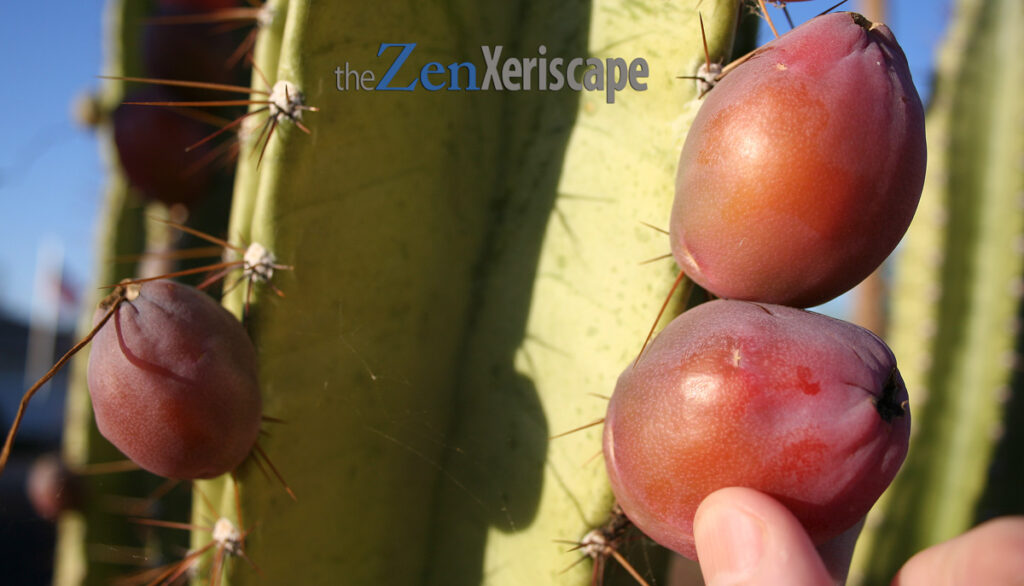
we can enjoy the beautifully look and temptingly tasty
cactus fruit!
Photo by Doug Martin
Try a free 30-day trial of Prime. (As an Amazon Associate, I earn a commission from qualifying purchases.)
TAKEAWAYS:
Cactus flower anatomy
Even though all flowers look very complicated when you dissect them, their reproductive systems are simple to understand. Remarkably, the plant reproduction process is a lot like animal and human reproduction. It all comes down to the birds and the bees.
Have you ever cross-pollinated plants to get different flower colors? Please let us know in the comments section below. Thank you!
Content and photos by Doug Martin and the Zen Xeriscape


